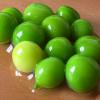-
Welcome to the eG Forums, a service of the eGullet Society for Culinary Arts & Letters. The Society is a 501(c)3 not-for-profit organization dedicated to the advancement of the culinary arts. These advertising-free forums are provided free of charge through donations from Society members. Anyone may read the forums, but to post you must create a free account.
Storing sous vide duck breast in the fridge
-
Similar Content
-
- 75 replies
- 27,497 views
-
- 109 replies
- 22,503 views
-
- 6 replies
- 226 views
-
- 2,002 replies
- 210,577 views
-
- 64 replies
- 4,207 views
-
-
Recently Browsing 0 members
- No registered users viewing this page.




Recommended Posts